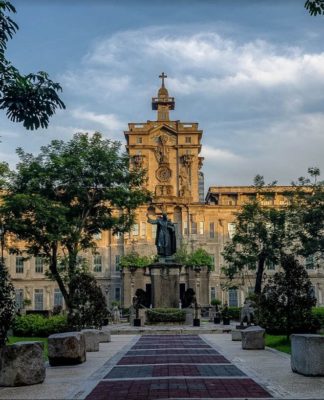 With 50-100 million Dengue cases occurring worldwide, and the Department of Health (DOH) showing 77,012 confirmed cases from January to September 2010 (last year we had 36, 997 during the same period), including 15 Thomasians who consulted the Health Service, and knowing that there is no immunity and no treatment, what is the good news about dengue?
With 50-100 million Dengue cases occurring worldwide, and the Department of Health (DOH) showing 77,012 confirmed cases from January to September 2010 (last year we had 36, 997 during the same period), including 15 Thomasians who consulted the Health Service, and knowing that there is no immunity and no treatment, what is the good news about dengue?
First, dengue can be prevented by following the 4S anti-dengue campaign of the DOH. With individual and community efforts, contraction of the disease can be avoided:
One is searching and destroying the breeding places, which is the most effective strategy. We must make sure that classrooms, offices, homes and gardens are free of potential water containers such as uncovered water pails, old tires, leaves on the grounds and roofs, and garbage. Even the outdoor dengue mosquito, Aedes albopictus, can breed in discarded softdrink caps. The indoor specie, Aedes Aegypti, can breed not only in flower vases but also in the collecting bins of the refrigerators and air conditioners.
Two is seeking early consultation, which is highly recommended since fever is the most common complaint and must not be ignored. Prevention is still better than cure, and increasing fluid intake during fever is life-saving. But in case of emergency, consult a physician at the Health Service immediately.
Three is self-protecting by wearing protective clothing such as pants and long-sleeved tops, and using non-toxic, citronella-based mosquito repellants. Since its first case in 1953, there is no excuse for anyone in a dengue-prone country like ours not to follow preventive measures. Wearing protective clothing, especially pants, needs emphasis since the mosquitoes are low-flying -insects and bite the lower extremities. The sight of people wearing shorts during the wet season scares physicians like me.
Last is saying no to indiscriminate fogging, which pertains to the prohibition of the one-shot fogging operations being done in some barangays and villages. Here in UST, we perform larvi or ovitrapping operations and we must be the first academic institution to do so. When there is a positive yield during the operations, a four-day fogging operation is performed that aims to eliminate all the emerging adult forms of the dengue mosquitoes. Larvi/ovitrapping is an ongoing and university-wide anti-dengue measure being done by the Health Service in cooperation with the Facilities Maintenance Office and the janitorial service providers since 2008.
Another good news is that dengue can now be diagnosed on the first day of fever with the use of the dengue kit test. This Dengue NS1 test has the antigen containing a non-structural glycoprotein that detects dengue virus that would yield a positive result confirming the diagnosis of dengue. This is available in the UST Hospital and other tertiary hospitals as well.
With this confirmatory test, the treatment of dengue, mainly rest and oral hydration, is initiated early and prevents the progression to the more serious stages.
The best news yet is that we do not need experts to stamp out this deadly disease because each one of us is empowered to do this. Thus, we enjoin everyone to contribute to our anti-dengue strategy.
There is no reason to stop the fight against dengue. We must be part of this campaign to prevent the spread of the disease so that we can save a lot of people.















